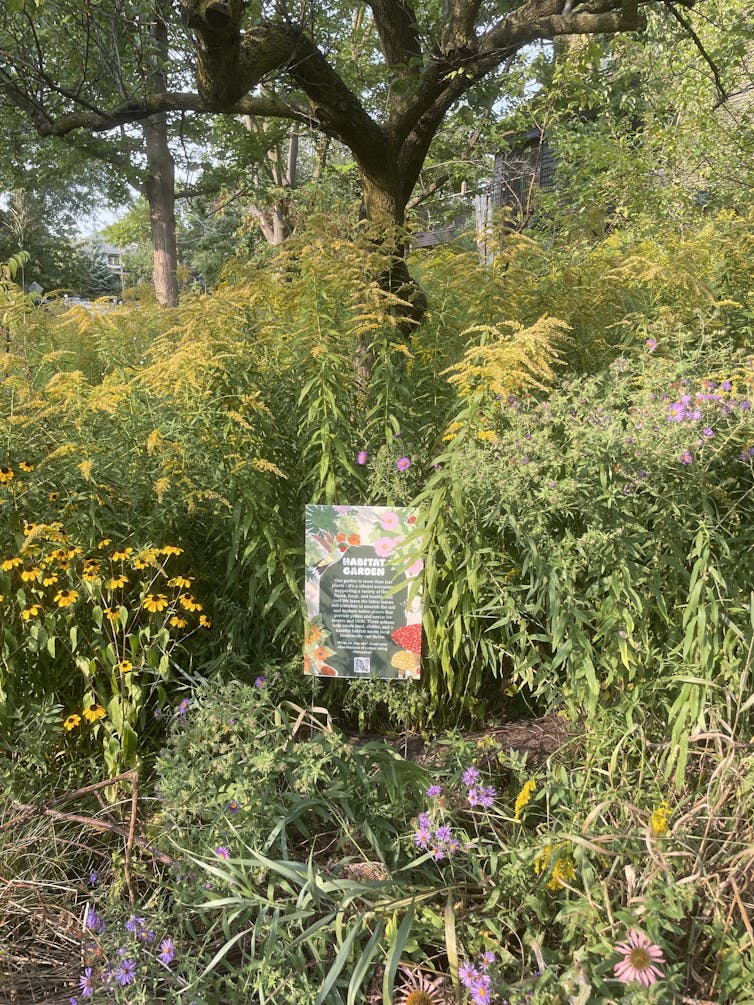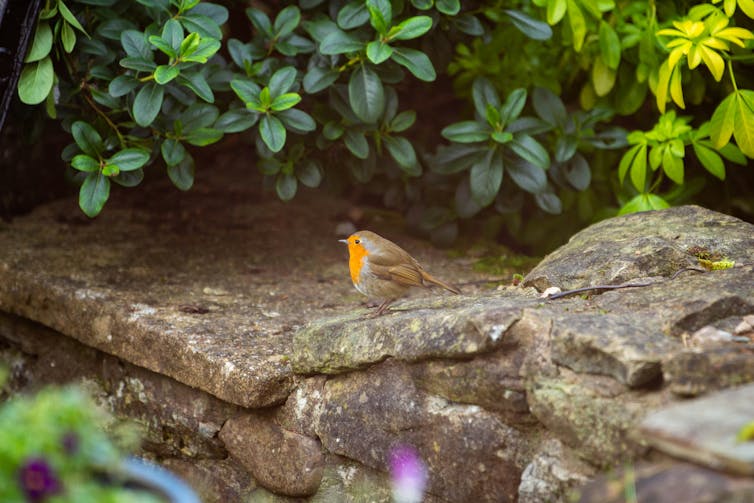Biodiversity is essential to mitigating and adapting to climate change, enhancing the resilience of ecosystems and safeguarding the ecological functions that all living beings depend on for survival.
There is little doubt that we are at a critical point in the loss of biodiversity in Canada with thousands of species currently in danger of disappearing, while global experts continue to warn about Earth’s ongoing sixth mass extinction.
As a response to the cascading climate crisis, wildlife habitat gardens have grown in popularity. These are spaces designed to attract and sustain local wildlife, and include efforts such as rewilded meadows, pollinator patches, rain gardens, naturalized lawns and others.
Cultivating a garden for biodiversity is not an all-in or nothing task. In fact, there is a wide range of simple actions anyone can take to regenerate and conserve biodiversity right at home.
We are currently organizing a biodiversity public literacy campaign at the National Environmental Treasure, a people’s trust fund devoted to funding Canadian environmental organizations.
Last year, we partnered with Prof. Nina-Marie Lister and the Ecological Design Lab at Toronto Metropolitan University on their Bylaws for Biodiversity research, along with Nature Canada and FLAP Canada, to develop Gardening for Biodiversity resources.
Supporting biodiversity in your garden

(Nina Marie Lister)
Together, we’ve created a series of free, fact-based guides to help people learn how to cultivate biodiversity and support for wildlife habitat in private gardens.
This series currently includes four comprehensive booklets, each focusing on key aspects of biodiversity gardening:
While there are plenty of great garden practices out there, these are five easy and impactful ways to boost biodiversity and cultivate a garden safe for urban wildlife, taken directly from our booklets.
Use alternatives to pesticides
Pesticides in your garden can harm beneficial insects and can be detrimental to the environment, wildlife and human health. Instead of using chemical-based pesticides, try natural alternatives like biopesticides, horticultural oils and insecticidal soaps that can be just as effective.
Likewise, attracting predatory insects and wildlife into your garden who will actively feed on the harmful pest is also an effective starting point as this is a process of pest-control that occurs naturally in healthy ecosystems.
There are also DIY pesticides, such as sea salt spray, water-vinegar mixtures and coffee grounds.

(Nina Marie Lister)
Leave the leaves
Decomposing plant litter, like fallen dead leaves, tree bark, needles and twigs, is an important component of maintaining soil health, nutrient cycling and biodiversity.
By choosing to leave the leaves in your garden, you will support the variety of species who overwinter in them, from bees and caterpillars, to butterflies, spiders and more.
Prioritize pollinator-attractive plants
In addition to pollination, insects are beneficial for a variety of other reasons including for pest control, seed dispersal and decomposition.
The best way to attract insects largely depends on which insect you are trying to attract. But as a general rule, it is always a good practice to source plants locally and prioritize native species.
Next best to native plants are benign ornamentals and non-natives. Cultivating a diverse range of flowers, especially native plants and herbs, promotes a resilient ecosystem. It also helps natives out-compete invasive species and to reverse the downward trends of mass species decline.
Read more:
How to fight Insectageddon with a garden of native plants
Make your garden safe for birds
Birds contribute to healthy ecosystems: they pollinate plants, disperse seeds and prey on insects. Unfortunately, North American bird populations are experiencing a rapid decline due to habitat loss, degradation and other global pressures.
Aadopting bird-safe gardening practices offers a powerful way to combat these threats and support biodiversity conservation on a local scale. Beyond core habitat elements, additional practices can enhance the garden’s appeal to birds.
Organic gardening without pesticides or herbicides, keeping cats indoors, removing potential entanglement hazards and using bird-collision prevention markers on reflective surfaces can not only attract birds, but also ensure their safety as well.

(Unsplash/Richard Bell)
Advocate for biodiversity
Although there’s been a growing movement toward more biodiversity-supporting practices, outdated municipal bylaws and enforcement policies continue to limit the potential of habitat gardens.
These disputes over the scope and application of bylaws have brought attention to various legal contradictions and outcomes that negatively impact progress on biodiversity recovery, all the while undermining and negating related environmental objectives on private land.
By advocating and encouraging your municipal leaders to adopt science-based biodiversity-supportive bylaws, you help to establish the legal frameworks and political agendas that directly impact long-term ecological health and promote sustainable development and the regeneration of biodiversity.






